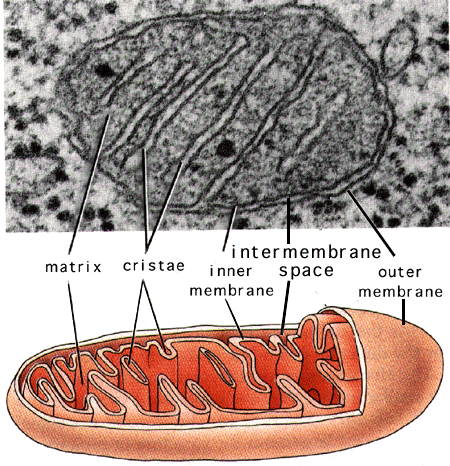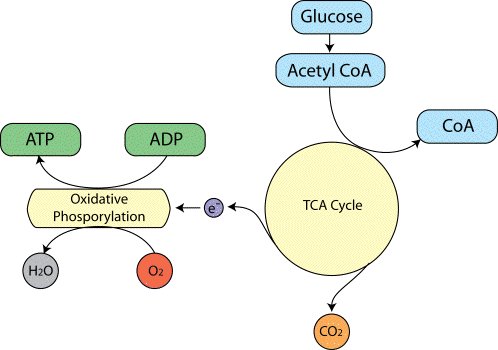
Source : http://microbewiki.kenyon.edu/index.php/Mitochondria
A quick overview :
The mitochondria is the powerhouse of the cell whereby oxidation of carbohydrates occurs to release energy.
Today , we shall be studying the mitochondria in further and greater details.
So , let's zoom into the inner details of the mitochondria.
- Outer Membrane
The outer membrane is smooth and continuous and it encloses the entire organelle. It contains a large number of integral proteins, called porins, which helps facilitate diffusion of molecules in and out of the inter-membranal space or in and out of the mitochondria.
In our model, the outer membrane is presented by the outer wall of the container.
- Inner Membrane
Extensively folded into cristae , which increases the surface area to volume ratio. It projects into the matrix (which is the area bounded by the inner membrane)
- Inner membranal space
Because of channels in the outer membrane of the mitochondria, the content of the intermembrane space is similar to that of the content of the cytoplasm.

The inner membrane or the Cristae , is the site of oxidative phosphorylation and electron transport.
- Oxidative Phosphorylation
- It is a metabolic pathway in which energy released by oxidation of glucose molecules are used to synthesize Adenosine Triphosphate from Adenosine Diphosphate
- Electron Transport
electrons are transfered from electron donors (NADH) to electron acceptors (Oxygen)
From the diagram above , we can see that NADH is the electron donor since it gives out Hydrogen ions . In this process , Adenosine triphosphate is formed from adenosine diphosphate as hydrogen ions are transfered over.
It tends to have a low pH because of the proton gradient which results when protons are pumped from the mitochondrial matrix into the intermembrane space during electron transport.
- Matrix
The interior enclosed by the Cristae
contains soluble enzymes that catalyze theoxidation of pyruvate and other small organic molecules
contains the mitochondria's DNA and ribosomes.
membrane contains aquaporins that allows water moelecules to pass through it.
has a pH of about 7.8 This is the region where the Kerbs cycle is carried out , which is a series of complex reactions involving a lot of enzymes
 Generally ,the kerbs cycle is just showing the formation of Carbon Dioxide and Adenosine triphosphate through these complex series of reaction
Generally ,the kerbs cycle is just showing the formation of Carbon Dioxide and Adenosine triphosphate through these complex series of reaction- Ribosomes
Ribosomes in the mitochondria have the same function as ribosomes found everywhere else in the cell, which is basically to synthesise proteins. (Ribosomes are the SITES of protein synthesis) In terms of structure, they are only slightly smaller than those found in other parts of the cell.
In our model, the ribosomes are represented by the smaller cream-coloured balls.
Ribosomes consist of 2 subunits - 40s and 60s.- DNA
1. Different from DNA in the nucleus
2. contains 37 genes and 1500 mitochondrial proteins
3. Passed down only from maternal line (why?)
mitochondria are normally inherited exclusively from the mother. The mitochondria in mammalian sperm are usually destroyed by the egg cell after fertilization. Also, most mitochondria are present at the base of the sperm's tail, which is used for propelling the sperm cells
- Phosphate granules
Regulates internal ionic environment in mitochondria
For a summary of the mitochondria , click here
Credits :
en.wikipedia.org
youtube.com
Google images for all the relevant images
google.



No comments:
Post a Comment